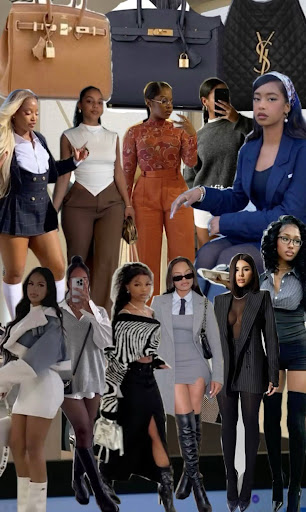
Why African Aunties Are The Real Influencers
Before social media made influence a profession, African aunties already had it down to an art. If you think content creation is a flex, try surviving a family function under an auntie’s gaze. With no camera crew, brand deals, or curated feeds, these women have been shaping trends, narratives, and entire family dynamics without even trying. The Look that Launches a Thousand Judgements It starts with the stare. That slow, calculated glance African aunties give when you walk into a room, half inspection, half silent judgment. Congratulations, you’ve been officially noticed if you’ve ever been on the receiving end of that gaze. And if an auntie notices you, it means you exist. Their influence begins with presence. Not the kind measured in likes or views, but the kind that stops conversations mid-sentence. The kind that walks into a party dressed in a flamboyant Bubu gown, gele perched high like a crown, heels clicking with authority. They don’t announce their arrival as they are the announcement. The Original Curators of Style While influencers rely on filters and flash sales, aunties move culture with a few well-placed accessories. Before oversized sunglasses became a fashion statement, they were already a staple at church services and weekend owambes. Aunties have been swinging those structured handbags fashionistas now flaunt with flair since before it was cool. From their nails to their perfumes, everything is intentional. A full face beat, jewelry that jingles with confidence, and a walk that says, “I’ve seen things you can’t even imagine.” They were soft-launching influencer aesthetics before Instagram even existed. Owambe Icons Nowhere is their star power more obvious than at Nigerian parties. Aunties’ headline owambes. Draped in coordinated aso-ebi, every outfit a designer’s dream, they command the dance floor like royalty. Hands in the air, rings glinting under party lights, nails flawless as they signal the DJ to “play that track again!” Their movements are precise. Their expressions are Immaculate. They throw money like confetti, never losing rhythm, never letting their gele slip, not even once. And if you ever catch an auntie dancing in slow motion, eyes closed, in pure bliss, you’re witnessing someone fully in her power. She is the vibe. She is the moment. Ojude Oba: The Met Gala of the West Every year in Ijebu land, aunties transform into full-blown fashion icons for Ojude Oba, a celebration of Yoruba royalty and heritage. It’s a cultural spectacle. Outfits coordinated down to the last bead. Color themes chosen with the precision of a royal court. Synchronized walking, regal glances, and competition-level posing for photos. This is not just showing up. This is legacy on display. And the peer review always ruthless. One head-to-toe glance from a fellow auntie can determine whether your tailor gets another job or a stern warning. Unsolicited Advice, Certified Impact Their style might make you stare, but their words stay. Aunties don’t need microphones or megaphones. A single “hmm” can quiet a room. A raised eyebrow can trigger an existential crisis. And when they start with “Come, let me talk to you…” you know a life lesson or lecture is loading. Yes, their advice can sting. “See your mate, she’s already married with two kids and a house in Lekki.” But wrapped in sarcasm, wisdom, and just the right amount of roasting, is often some real-world truth. They’ve lived through wars, recessions, heartbreaks, and homecomings. Their influence isn’t always soft, but it’s almost always rooted in care. The Life of Every Gathering Aunties are the heartbeat of African events. Be it weddings, funerals, naming ceremonies, or Sunday lunches, they bring the energy. They’ll laugh, gossip, dance, and subtly plant the seed of matchmaking ideas. Remove them from any event, and you’ll feel the absence in the air, like the music suddenly lost its beat. And yes, they can be a handful, opinionated, dramatic, even overbearing. But that’s part of the charm. They are layered, vibrant, and complex. Equal parts pressure and presence. Love and legend. Legacy Over Likes So while social media influencers chase algorithms and analytics, African aunties continue doing what they’ve always done: showing up, showing out, and shaping culture. No ring lights. No brand deals. Just pure, unfiltered influence. With digital clout in present times, maybe it’s time we logged off a little and learned from the original influencers. Because aunties don’t just set trends; they leave legacies.


